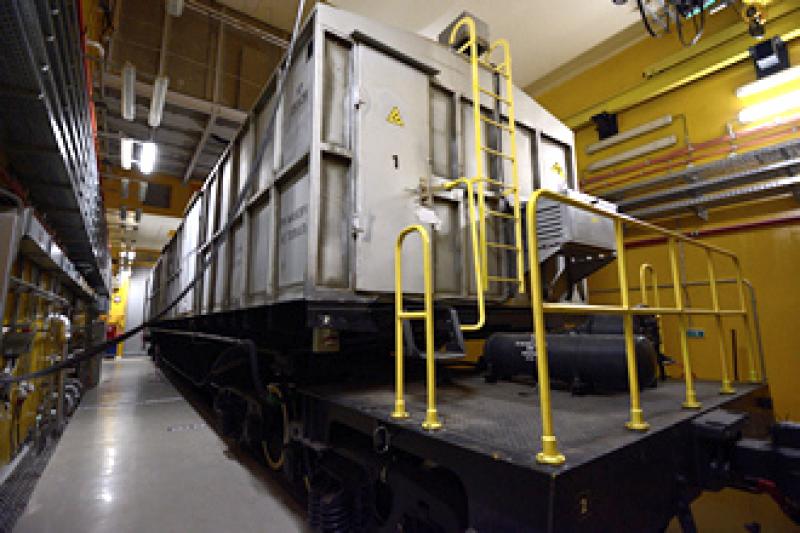As of 1 December, 186 used fuel assemblies have been transported from the old used nuclear fuel storage facility (ISF-1) to the Interim Storage Facility 2 (ISF-2) at the Chernobyl nuclear power plant.

The second double-walled shielded canister (DSEP) has now been loaded with used fuel. Using the used fuel handling technology at ChNPP, each of the assemblies is divided into bundles, which, in turn, are installed in fuel cartridges and placed in the canister.
Over the next two weeks, the personnel responsible used fuel management at ChNPP will seal the canister. This involves welding the inner lid, gas and vacuum drying, filling the canister with helium, sealing the inner lid, sealing the outer lid, filling the space between the canister casings with helium, and sealing the outer case covers.
At all stages of this process, continuous quality control of the welded joints will be carried out by visual inspection and capillary inspection. After filling the canister with helium, the tightness of the inner and outer shells will also be checked.
The first canister was loaded into the concrete storage module of ISF-2 on 18 November. ISF-2 began hot testing earlier this year and the full licence to operate is expected in early 2021.
ISF-2 cost €400 million ($474m) and was financed with contributions from Belgium, Canada, Denmark, the European Union, Finland, France, Germany, Italy, Japan, the Netherlands, Norway, Russia, Sweden, Switzerland, Ukraine, the UK and the USA. In total, more than 21,000 assemblies from Chernobyl reactors 1, 2 and 3 will be processed over the next eight or more years.